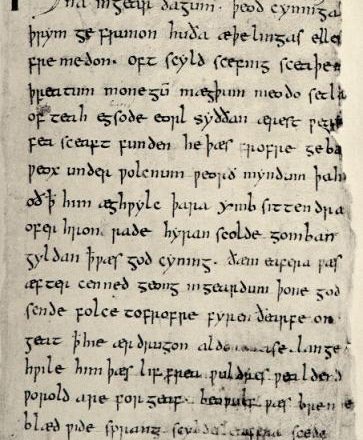Beowulf is one of the earliest examples of English literature, and because of that evidence on its background can be hard to uncover. However, Professor Gale Owen-Crocker found a significant amount of information on the Anglo-Saxon culture surrounding Beowulf through the fashion and ornaments they made. Director of the Manchester Centre for Anglo-Saxon Studies, Professor Owen-Crocker elaborated on the descriptions of clothes and weapons used in the text at a presentation a few weeks back; she revealed the cultural importance of those items as well as their significance to the story itself.
Prof. Owen-Crocker presented quite a number of amazing facts at the talk, showing not just her knowledge of Anglo-Saxon fashion, but of the story of Beowulf as well. She discussed the fascinating mystery behind Grendel and how the ambiguity in its appearance was intended to add the fear of the unknown into the story. She pointed out the importance of night within the story, too, and how it was a time of both great fear and peace for Danish culture at that time.
The story of Beowulf is filled with a lot of description, especially when discussing the celebrations that the titular hero would participate in. Within these parties, numerous drinks are mentioned. Prof. Owen-Crocker made sure to point out how important the drinks were in this time. In fact, she pointed out that while drinks were brought up numerous times in the story, food is rarely presented, with the only form found with the bodies that Grendel consumes.
While celebration is a big aspect of society in Beowulf, war plays a prominent role as well, and there are plenty of descriptions of the various weapons involved. Owen-Crocker states how there’s a lot of imagery involving spears, which indicated how prominent these weapons were in battle. Swords are also depicted, but not nearly as often because, as Owen-Crocker points out, they aren’t exactly necessary—Beowulf’s strength takes care of whatever a sword might accomplish. Because Beowulf is powerful enough to rip the arm off an immensely large monster, swords just aren’t that important. His power, as seen with the fight with Grendel’s mother, and, more importantly, the fight with the dragon at the end, shows through brute force rather than by way of weaponry.
When Beowulf is going toe-to-toe with the ferocious dragon, he attacks the creature with such force that it breaks his sword and he has to use his knife, something that Owen-Crocker puts a lot of focus on. Owen-Crocker discusses the long history of knives within Anglo-Saxon society, stating how they were always worn by lords and were even buried with them alongside their helmets. Helmets are another prominent grave good that Owen-Crocker brings up, since the designs of the helmets, with straps on the chin and decoration and focus on the face, shows how the dragon was able to go for Beowulf’s neck.
All of this information and more was presented at Prof. Owen-Crocker’s talk, which showed the various intricacies found in the Beowulf story and how they held more meaning than one might expect. The background of Beowulf is one that is still filled with mystery, but with experts like Professor Gale Owen-Crocker, we are able to find the largest amount of information in the places that one might not expect.





